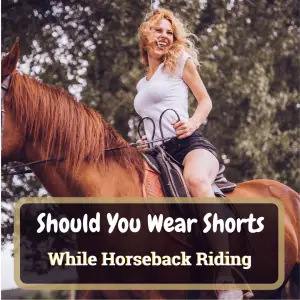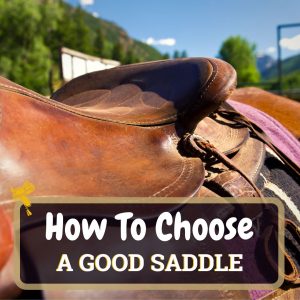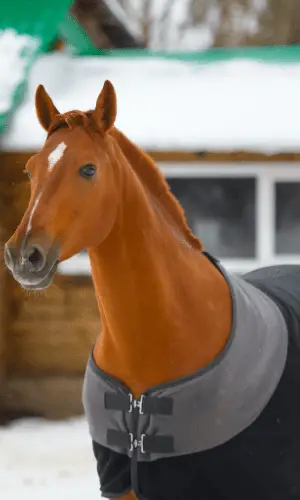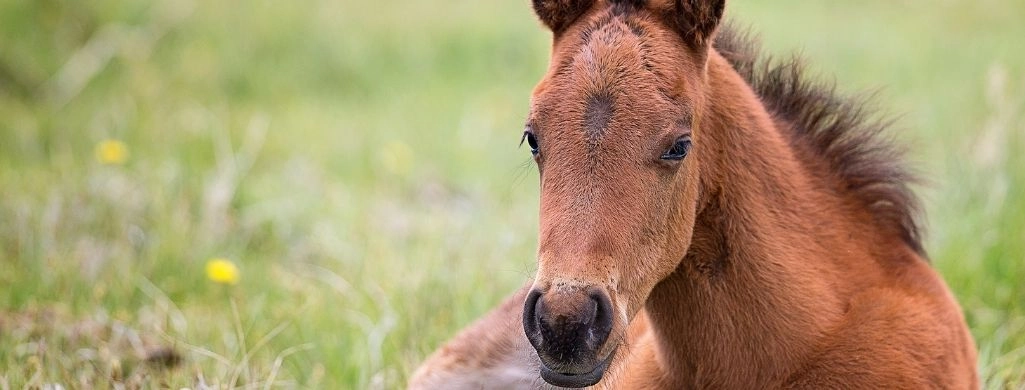
On average, a horse stops growing at four to five years old. At two years old, it’s already grown 95% of its total growth. Larger breeds of horses like draft horses can grow until they are 8 years old. Factors that determine horse growth are breed, health, and diet.
- How Much Will a Horse Grow After 1-Year-Old? “Yearling Stage”
- How Much Will a Horse Grow After 2 Years Old?
- How Much Will a Horse Grow After 3 Years Old?
- How Much Will a Horse Grow After 4 Years Old?
- Height and Weight of Horses at Different Life Stages/Age
- Filly
- Stallion
- Gelding
- A Healthy Diet for a Growing Horse
- Monitor your foal’s growth:
- Flexural limb deformities (FLD)
- Common causes of DOD
- When do Thoroughbred, Paint and Quarter Horses Stop Growing?
- When do Arabian Horses Stop Growing?
- When do Miniature Horses Stop Growing?
- What’s the Biggest Horse in the World?
- What’s the Smallest Horse in the World?
- A Table of 19 Horses With Full Growth Ages
- Wrapping It All Up
After extensive research on the subject, this article has everything you need to know regarding when do horses stop growing. I’ve provided figures on each growth stage in the horses’ life as well.
Once the maximum height is attained within four to eight years depending on the horse, it will grow a bit wider and fill out with more muscle as well. The total growth time for a horse in terms of height, width, muscle, and emotional maturity can be rounded off to eight years old.
A fully grown horse can be 14–17 hands tall. This translates to 56–68 inches (142–178 cm) in height. The weight of a horse is generally 840 to 1,210 lb (380 to 550kg) However, the horses’ diet has an impact on these figures as well, for example:
After eight to ten weeks of age, high-quality grain and forage can be fed to a foal to increase the speed and size of its growth. Any horse that receives extra nutrients through high-quality grains and forages throughout its life will grow quicker and bigger than a horse that lives mostly off pasture grass and hay.
How Much Will a Horse Grow After 1-Year-Old? “Yearling Stage”
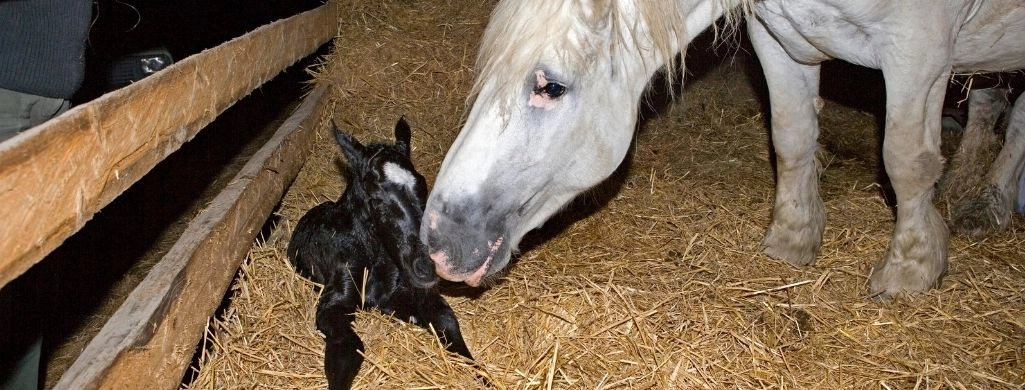
At this young age, your horse has already grown up to 90% of its total height and weight. Yearlings can put on as much as 3 lbs (1.4 kg) of weight per day. This is the quickest growth stage and there isn’t that much growing to do after this. Just slow and steady growth, you’ll probably only notice this growth if you only see the horse seasonally.
How Much Will a Horse Grow After 2 Years Old?
At two years old, your yearling now becomes either a colt(male) or filly (female). In my experience horses at this age have usually grown up to 95% of their full adult height so you can expect around 5% additional growth in total after just two more years!
I normally see a 5% increase in growth from years two to five and then a bit of filling out in muscle in years five to eight.
How Much Will a Horse Grow After 3 Years Old?
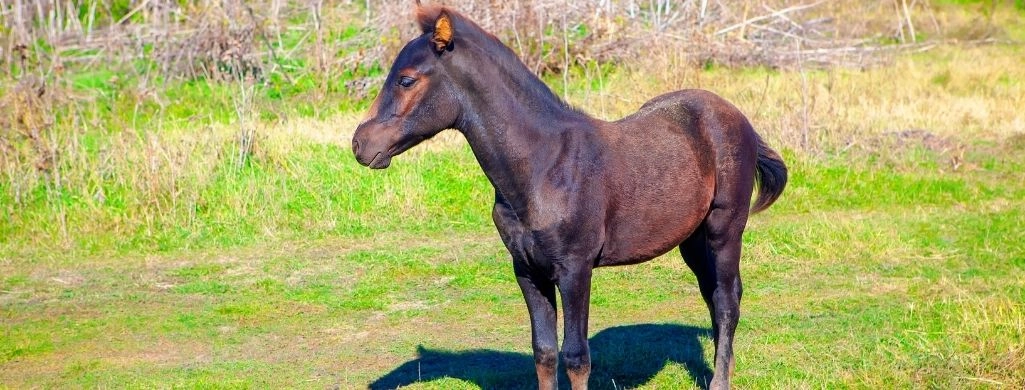
Still referred to as colts and fillies, the average additional growth expectation of a 3 year old horse is less than 5% of its current height. On average, the horse will only be growing in height for another one or two years and it won’t be very noticeable.
They will still grow in width and muscle for another three to four years, but not by that much. At this stage, they are usually at least 96% of their total weight and height. This is applicable to most horses, including quarter horses.
How Much Will a Horse Grow After 4 Years Old?
At 4 years old, your colt or filly now becomes your stallion (male) or mare (female) Normally a horse will not grow more than five percent of its current height. They will still fill out in width and muscle for a few years, though.
If it’s a Draft horse or Arabian, it can still grow for another two or three years before maxing out on height. Most horses are fully grown in all regards, height, width, and muscle, after seven to eight years.
Height and Weight of Horses at Different Life Stages/Age
Foal
Any horse under 1 year of age is referred to as a foal.
Height: A newborn foal is usually around five to seven hands tall, about half the height of its mother. That’s around 20–28 inches (50cm–71cm) in height.
Weight: A newborn foal weighs between 76 lbs (34kg) and 108 lb (49kg) normally around 10% of its mothers’ weight.
Bonus fact: A foal that is still nursing is called a suckling, and a foal that is still being weaned is called a weanling. Most foals have completed the weaning process within four to seven months from birth.
Yearling
Any horse between 1 and 2 years of age is referred to as a yearling.
Height: A yearling grows to around thirteen hands tall or 95% of its total expected growth. That’s around 52 inches (132cm) in height. Horses grow most of their height in the yearling stage of their life. Like a child growing from 7 to 17 years old.
Weight: A fresh yearling weighs around 550 lbs (250 kg) and then can double in growth in that year. The growth rate starts decreasing after this time period.
Bonus Fact: Yearlings can put on as much as 3 lbs (1.4 kg) of weight per day!
Colt

A male horse under four years old is referred to as a colt.
A new colt has already grown to at least 96% of its total size. This is where they will start to fill out with muscle more noticeably.
Height: A colt is almost fully grown and can be at least 12–15 hands tall. This translates to 48–60 inches (122–152 cm) in height.
Weight: A new colt at two years of age is at least 750 to 1089 lb (340 to 494 kg)
Filly
A female horse under four years of age is referred to as a filly.
A new filly has already grown to at least 96% of its total size.
Height: A Filly is normally a bit smaller than a colt but still around 11–14 hands tall. This translates to 44–56 inches (112–142 cm) in height.
Weight: A new filly at two years of age weighs at least around 675 lb to 980 lb (306 to 445 kg)
Stallion
A non-castrated male horse four years old and older is referred to as a stallion.
Height: A stallion is generally considered fully grown in height and is about 14–17 hands tall. This translates to 56–68 inches (142–178 cm)
Weight: The weight of a stallion is generally 840 to 1,210 lb (380 to 550kg)
Mare
Female horses four years and older are referred to as mares.
Height: A mare is generally considered fully grown and is about 13–16 hands tall. This translates to 52–64 inches (132–162 cm) in height.
Weight: The weight of a mare is at least 756 to 1089 lb (344 to 495kg)
Gelding
A castrated male horse of any age is referred to as a gelding.
Height: A gelding is generally considered fully grown and is about 14–17 hands tall. This translates to 56–68 inches (142–178 cm) in height.
Weight: The weight of a gelding is at least 840 to 1,210 lb (380 to 550kg)
A Healthy Diet for a Growing Horse
Foal
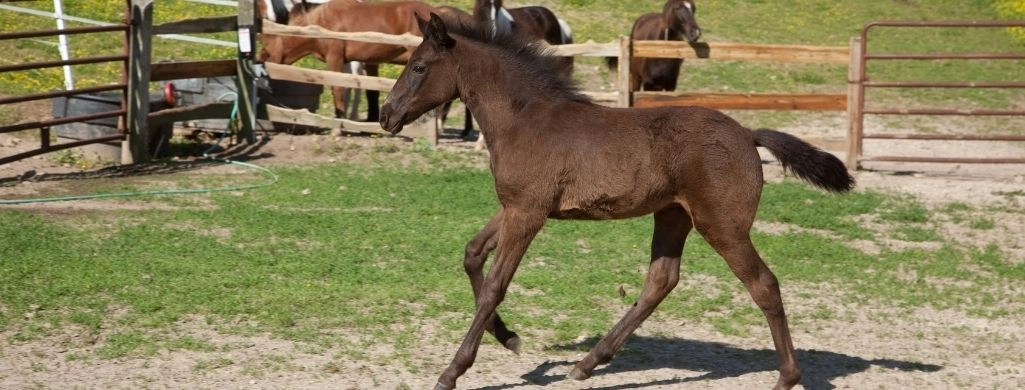
Suckling – An average suckling foal will consume about 33 pounds (15 kg) of milk daily. After a few days, the young suckling starts following their mothers’ example and nibbles a bit on the grass. This is what we call the start of the weaning process, where the young foal starts learning to eat from the land.
Weanlings – Weanlings will start to consume 3% of their body weight in dry matter per day, and at this growth stage they are receiving the most important nutrients of their life. Nutrition is of paramount importance, as this is the age when the skeleton is most vulnerable to developing disease or disorders.
Weanlings need a considerable amount of energy in their diet to support their rapid growth. A lack of energy in their diet will stunt their growth and too much energy may cause them to grow unnaturally fast. Both of these scenarios should be avoided.
Protein – A high-quality protein intake is essential for muscle, ligament, and tissue development. An adequate amount of protein is required each day to ensure a healthy, natural growth pattern.
Diets that are low in two specific essential amino acids, lysine, and threonine, will stunt the growth rate and decrease the nutritional intake in young, growing horses. Lysine should account for just over 4% of the weanlings’ total protein intake.
Minerals – Weanlings require an ample supply of minerals, most importantly calcium, phosphorus, zinc, and copper. These are necessary for proper bone development.
However, supplementing too much or too little must be avoided to prevent developmental orthopedic diseases. I advise working with a veterinarian or equine nutritionist to ensure a weanlings’ mineral needs are being met.
Monitor your foal’s growth:
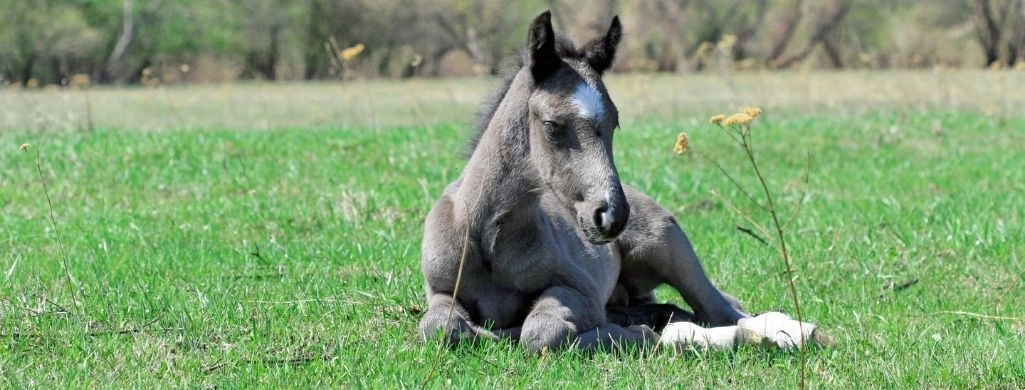
Monitoring the average daily gain, wither height, and hip height can be invaluable in making sure your foal is growing in a healthy fashion. By monitoring these on a weekly basis, you can show your veterinarian the results and changes can be made in the diet accordingly to maintain a level plane of growth.
You will need a horse height and weight measuring tape like this one They are very inexpensive and handy to keep around the barn. When purchasing one, make sure it is easily readable and that the tape measure can be fixed if it begins to wear. A classic tape measure will also work in a pinch.
Osteochondrosis (OCD)
This is the result of defective maturation of cartilage into bone during growth–cartilage that does not ossify properly and doesn’t reach sufficient maturation or strength.
OCD has no specific clinical signs or symptoms and so it may not be apparent even with clinical observation. X-rays are the best way to determine if a horse is suffering from OCD. Although more subtle OCD lesions may still not be apparent. In less severe cases, OCD can heal itself over time.
Physitis
This is the inflammation of the growth plate. Similar to OCD, a foal may have minor physitis without any obvious clinical signs. Clinical signs that can make it more apparent might include an hourglass appearance of the fetlock joint or a bony ridge above the carpus. If these signs are observed, X-rays will be needed to determine the severity of the physitis.
Cervical compressive myelopathy
This is the compression of the spinal cord due to either instability of the vertebral column or narrowing of the spinal canal. Horses that suffer from this disorder are more commonly referred to as “wobblers”. There are many factors that can cause a horse to become a wobbler, as balance is affected by many different factors.
Angular limb deformities (ALD)
ALD is easier to identify as the limb or limbs do not rest on the normal weight-bearing axis. The limbs may be angled towards or away from the horse’s body. ALD can be present from birth or develop over time.
Flexural limb deformities (FLD)
This is also visually obvious, as you will see the legs of the horse will be partially flexed. This occurs when the functional length of the tendon is not sufficient to maintain the limb in its normal extension. Clinical signs would be an abnormal upright stance and a knuckling at the fetlock.
Club Feet
Club feet have smaller, steeper angles compared to a normal hoof. Club feet can be inherited, due to decreased weight-bearing, the result of injury, or flexural deformities involving the deep digital flexor tendon.
Common causes of DOD
- Genetic predisposition
- Biomechanical trauma
- Stress on bones due to inappropriate exercise or obesity
- Abnormal rapid growth
- Inappropriate or imbalanced nutrition
When do Thoroughbred, Paint and Quarter Horses Stop Growing?
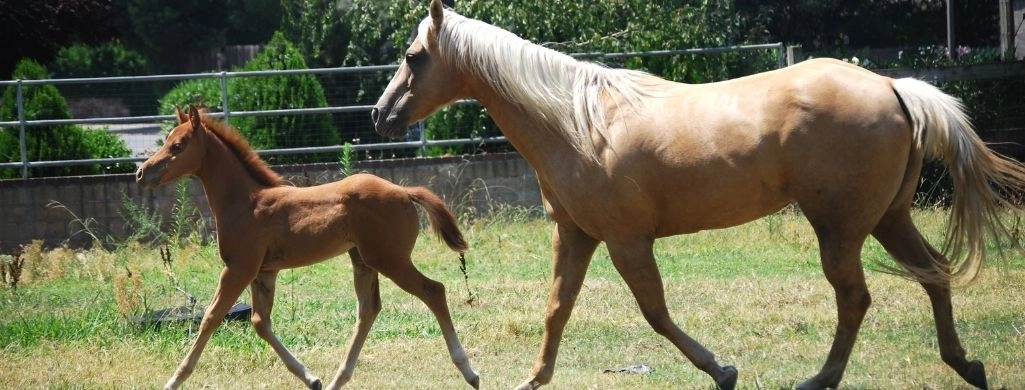
On average, these horses stop growing in height after four to five years of age. They can grow up to 14–17 hands tall or 56–68 inches (142–178 cm) in height. The weight of a quarter horse is 840 to 1,210 lb (380 to 550kg) After five years they will grow in width and muscle for two or three more years and sometimes gain a little extra height as well.
When do Arabian Horses Stop Growing?
With Arabian horses, they grow for a bit longer and usually grow bigger than other horses. Many Arabian horses grow even in height up to the age of eight years. A long time for a big horse.
When do Miniature Horses Stop Growing?
Miniature horses can be fully grown within one to two years! I suppose they don’t have much growing to do so it’s pretty quick.
What’s the Biggest Horse in the World?
Big Jake the Belgian Gelding horse has earned worldwide fame for his extraordinary height. Standing (without shoes) at a majestic 20 hands 2.75 inches (210.19 cm), he officially became the Tallest horse living when measured on 19 January 2010 until his death in June of 2021.
What’s the Smallest Horse in the World?
Thumbelina (born May 1, 2001) is a dwarf miniature horse and the world’s smallest horse. She stands 17 inches (43 cm) tall and weighs 57 lb (26 kg), and received the title of world’s smallest from Guinness World Records.
A Table of 19 Horses With Full Growth Ages
| Different Breeds | Years to Full Height Growth |
| Quarterhorses | Four to Five Years |
| Thoroughbred Horses | Four to Five Years |
| Paint Horses | Four to Five Years |
| Tennessee Walker | Six to Eight Years |
| Morgan | Four to Five Years |
| Appaloosa | Four to Five Years |
| Miniature Horse | One To Three Years |
| Warmblood | Four to Five Years |
| Andalusian | Four to Five Years |
| Hackney | Four to Five Years |
| Belgian Draft Horse | Six to Eight |
| Shetland Pony | One To Three Years |
| Gypsy Vanner | Four to Five Years |
| Friesian | Five to Eight Years |
| Clydesdale | Four to Five Years |
| Haflinger | Four to Five Years |
| Paso Fino | Four to Five Years |
| Arabian Horses | Five to Eight Years |
| Welsh Pony | One to Three Years |
Wrapping It All Up
When do horses stop growing? A horse’s growth is determined by many different factors that will affect the lifespan of a horse. Horses can grow in height for four to five years and then after that they tend to gain weight or width for two or three more years before stopping their growth altogether.

